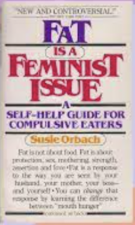What is Black? Searching for that word within the Cultural Formation tag in the Orlando digital history of women’s writing brings up, of course, a number of writers with unmixed African descent: from Phillis Wheatley and Mary Prince through Zora Neale Hurston to Toni Morrison and Buchi Emecheta.
But that’s only part of the story. Many iconic “black” writers come of mixed race. The black heroine Sojourner Truth was said by Harriet Beecher Stowe to be “evidently a full-blooded African,” a “fine . . . specimen of the torrid zone.” Yet Truth actually sprang from more than one race: she had a Mohawk grandmother. Mary Seacole, “Crimean heroine” (her own words) and black role model, had a free black mother born in the Caribbean (a ‘doctress’ or traditional healer) and a white Scottish father. Having grown up to pursue her mother’s calling in an all-white environment, she regularly insists on her own racial mixture. Her colour is “somewhat duskier” than that of disdainful white Englishwomen, but her “few shades of deeper brown” demonstrate her kinship (of which, she says, she is proud) “to those poor mortals whom you once held enslaved, and whose bodies America still owns.”
None of these cases can be considered dispassionately. The white Harriet Beecher Stowe, in seeing Sojourner Truth as black, saw her as a specimen or a work of art rather than a woman like herself. Mary Seacole seems to have felt it was an act of some magnanimity to identify with her black (blacker) sisters. Una Marson, Jamaican originator of the BBC’s groundbreaking radio programme Caribbean Voices, filled her poetry with remarks like “I am black / And so I must be / More clever than white folk.” Her play “Pocomania” pits African values against those of white culture to the detriment of the latter. A life of her by Honor Ford Smith, 1986, is titled Una Marson: Black Nationalist and Feminist Writer. And yet Marson changed the title of her manuscript memoir from “Autobiography of a Black Girl” to “Autobiography of a Brown Girl”. Was this because of her single white ancestor (an Irish great-grandfather)? Was it to avoid being linked with Bernard Shaw’s Black Girl in Search of God? In any case this never-completed, never-published autobiography is now lost without trace.
Some examples run, as it were, the other way. Many “white” women, like Elizabeth Barrett Browning, suspected that they might have some admixture of African blood, and for many, no doubt, the suspicion was a horrifying one. For Barrett Browning the suspicion led her to empathise imaginatively with the experience of black women, as is shown by her now-famous poem “The Runaway Slave at Pilgrim’s Point”. Jean Rhys, growing up white in the Caribbean, in a family which had formerly owned slaves, perceived the relations between the races from her earliest youth as antagonistic, and yet more complex than solely antagonistic. She used to envy the freer lifestyles of black people, and “longed to be identified once and for all with the others’ side which of course was impossible. I couldn’t change the colour of my skin.” On an island where most Roman Catholics were black, she resolved to become a Catholic nun when she grew up. For her it seems, whiteness was a burden that she would have liked to lay down.
Marina Warner, as a presumed-white English novelist, was staggered to discover from photographs that among her relations in Trinidad were some who were black. These revelations about an unspoken “creole past, the world of intermingling,” were exciting to her and her sister. But she was later to feel “stricken” by a further discovery: that a seventeenth-century ancestor, Governor of the West Indies, had had one son by an indigenous Carib wife and one by an English wife – and that the English son had killed the mixed-race son. For her the racial mixture that seemed to signify romance and adventure turned out to signify instead a squalid crime.
Orlando’s recent entries include those for mixed-race Black Britons like Andrea Levy and Jackie Kay, who have built enduring literary artefacts from conflicted feelings around race. Miss July, the feisty nineteenth-century protagonist of Levy’s The Long Song, dotes on her white daughter (who is unscrupulously kidnapped by her white father and disappears from July’s life for ever) and detests her black son (who having learned the printing trade as young Black Tom in London , makes good as that rarity in Victorian Jamaica, a black businessman and entrepreneur). Jackie Kay, raised by white Communists in Glasgow whom she still calls ‘mum’ and ‘dad’, has fashioned in Red Dust Road a gripping, moving, often comical tale of her quest to meet and to get to know two strangers and cultural aliens: her white, Scots-Highland birth mother and her Nigerian, scientist, born-again Christian father. Having been a black woman in Scotland all her life, she suddenly discovered what it was like to be a visiting white woman in a remote Nigerian village.
The last word has to go to Meiling Jin, a Chinese-Guyanan- British writer, and her poem called “Divide and Sub-divide”: “Please state / Whether you are: / Black-Asian / Black-Afro / Black-Caribbean / Black-Chinese / Black-Of-mixed-origin / Black-Middle-Eastern / or Black-other. . . . We shall not / Disclose it . . . . We simply wanted to / Know / So that we might further, / Divide and Oppress you. / Sorry / Cancel that last remark.”
What is Black? These writers have not answered. But their works have taught and will continue to teach that black is strong, complicated, mysterious — and productive!
This information is provided by Dr Isobel Grundy, University of Alberta, and comes from Orlando: Women’s Writing in the British Isles from the Beginnings to the Present, Cambridge University Press, by subscription: see http://orlando.cambridge.org.

